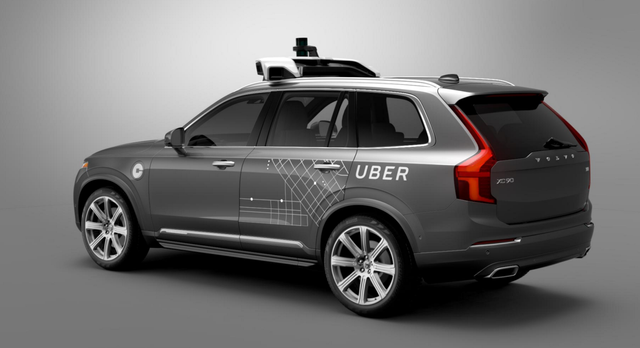Uber’s First Self-Driving Fleet Arrives in Pittsburgh This Month
Near the end of 2014, Uber co-founder and Chief Executive Officer Travis Kalanick flew to Pittsburgh on a mission: to hire dozens of the world’s experts in autonomous vehicles. The city is home to Carnegie Mellon University’s robotics department, which has produced many of the biggest names in the newly hot field. Sebastian Thrun, the creator of Google’s self-driving car project, spent seven years researching autonomous robots at CMU, and the project’s former director, Chris Urmson, was a CMU grad student.
“Travis had an idea that he wanted to do self-driving,” says John Bares, who had run CMU’s National Robotics Engineering Center for 13 years before founding Carnegie Robotics, a Pittsburgh-based company that makes components for self-driving industrial robots used in mining, farming, and the military. “I turned him down three times. But the case was pretty compelling.” Bares joined Uber in January 2015 and by early 2016 had recruited hundreds of engineers, robotics experts, and even a few car mechanics to join the venture. The goal: to replace Uber’s more than 1 million human drivers with robot drivers—as quickly as possible.
The plan seemed audacious, even reckless. And according to most analysts, true self-driving cars are years or decades away. Kalanick begs to differ. “We are going commercial,” he says in an interview with Bloomberg Businessweek. “This can’t just be about science.”
Starting later this month, Uber will allow customers in downtown Pittsburgh to summon self-driving cars from their phones, crossing an important milestone that no automotive or technology company has yet achieved. Google, widely regarded as the leader in the field, has been testing its fleet for several years, and Tesla Motors offers Autopilot, essentially a souped-up cruise control that drives the car on the highway. Earlier this week, Ford announced plans for an autonomous ride-sharing service. But none of these companies has yet brought a self-driving car-sharing service to market.
Uber’s Pittsburgh fleet, which will be supervised by humans in the driver’s seat for the time being, consists of specially modified Volvo XC90 sport-utility vehicles outfitted with dozens of sensors that use cameras, lasers, radar, and GPS receivers. Volvo Cars has so far delivered a handful of vehicles out of a total of 100 due by the end of the year. The two companies signed a pact earlier this year to spend $300 million to develop a fully autonomous car that will be ready for the road by 2021.
The Volvo deal isn’t exclusive; Uber plans to partner with other automakers as it races to recruit more engineers. In July the company reached an agreement to buy Otto, a 91-employee driverless truck startup that was founded earlier this year and includes engineers from a number of high-profile tech companies attempting to bring driverless cars to market, including Google, Apple, and Tesla. Uber declined to disclose the terms of the arrangement, but a person familiar with the deal says that if targets are met, it would be worth 1 percent of Uber’s most recent valuation. That would imply a price of about $680 million. Otto’s current employees will also collectively receive 20 percent of any profits Uber earns from building an autonomous trucking business.
Read rest of article here http://www.bloomberg.com/news/features/2016-08-18/uber-s-first-self-driving-fleet-arrives-in-pittsburgh-this-month-is06r7on
